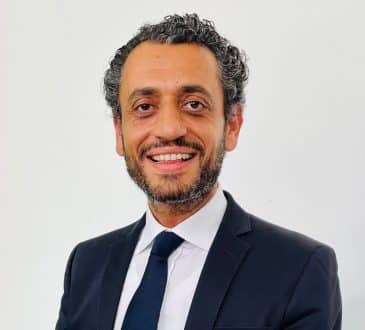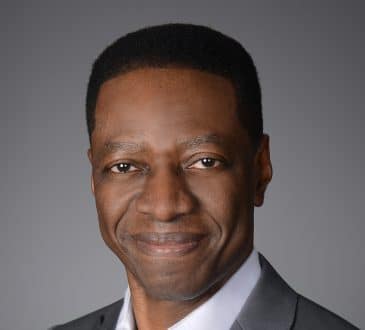Navigating Uncharted Waters: Addressing Unconscious Bias and Fostering Meritocracy in Leadership

High-level executives and boards face an increasingly complex landscape in an era where diversity, equity, and inclusion (DEI) are paramount.
The silent undercurrents of unconscious gender and image bias in the workplace present a nuanced challenge, often unspoken for fear of backlash, thereby allowing such biases to persist unnoticed and unaddressed. This issue permeates the fabric of organizational culture, subtly undermining the principles of meritocracy that many firms strive to uphold. Drawing on recent findings from a comprehensive study published in the Social Science Quarterly, this article delves into the intricate dynamics of physical attractiveness and its impact on intergenerational social mobility. The findings shed light on broader implications for leadership and internal promotion practices within the corporate world.
The Unseen Barrier: Unconscious Gender and Image Bias
The study’s insights reveal a compelling narrative on how physical attractiveness significantly influences males’ and females’ social mobility, within and intergenerationally. The outcomes in the United States are startling even when accounting for variables such as parental socioeconomic position, health, and a proxy for IQ.
This evidence underscores an uncomfortable truth—unconscious gender and image biases, although seldom discussed openly, play a pivotal role in shaping career trajectories and opportunities. High-level executives, C-suite leaders, and board directors must recognize that unconscious bias is a source of tension—and a challenging one because it perpetuates silently, as no one realizes how the bias operates.
Without realizing how bias operates, the opportunities to address bias are invisible, and actions to stop it when witnessed to remedy undesirable impacts become hollow declarations. A leader failing to embody their declarations becomes another dent in workplace trust and belief in executive leadership to deliver on the promise of DEI that customers and shareholders expect.
Meritocracy at a Crossroads
Meritocracy, a concept heralded as the antidote to bias, presupposes that promotions and opportunities are based solely on individual merit—talent, effort, and achievements. However, the underlying internal bias often overlooked undermines this principle, especially when leaders consciously or unconsciously favor individuals who mirror their image and background. This bias towards similarity over uniqueness inadvertently reinforces a cycle of In-group favoritism and Out-group exclusion, affecting both genders. Underrepresented in executive leadership roles, women face a disproportionately smaller pool of opportunities, exacerbating the challenge of achieving true meritocracy.
To address biases inherent in leadership selection and succession planning, organizations adopted a paradigm of meritocracy as the basis for internal promotion. Yet, this ideal falters in the face of deeply ingrained unconscious biases. Leaders inadvertently prioritize merit in those who resemble themselves, sidelining the richness of diversity and the fresh perspectives of unique individuals. This phenomenon occurs across genders, perpetuating a cycle where the existing structures and norms favor a select few. The scarcity of women in executive positions further amplifies the classic gender disparity, limiting the pool of candidates to challenge and ultimately transform these biases.
Embracing a Generative Vehicle for Change
Navigating this intricate landscape requires more than mere awareness of the biases at play. It necessitates a deliberate, generative vehicle for change—a dynamic shift in organizational culture and mindset that values diversity not merely as a checkbox but as a core strategic advantage when embodied at all levels of leadership, from the CEO down to the frontline. This embodiment fosters an environment where all members, irrespective of gender identity or background, can flourish based solely on their contributions and potential.
Moreover, the journey toward genuine meritocracy and inclusivity involves instituting mechanisms for regular self-reflection among leaders, encouraging them to examine and challenge their biases. Unpacking the automatic preferences and stereotypes that influence decision-making is pivotal. By adopting a more reflective approach, leaders can begin dismantling unconscious biases that cloud judgment, adopting a more inclusive and deliberate stance on promotions and leadership succession.
Five Concrete Actions for Executive Leaders
- Educate and Raise Awareness: Provide training programs about unconscious biases and their impact. Amplify that training by preparing leaders to host open conversations. For individuals to feel safe discussing and challenging unconscious biases, leaders must reward that vulnerability with genuine hearing, not just listening. Equip your teams with the tools to challenge their assumptions so they learn to recognize how to be inclusive and why that matters for a healthy workplace climate.
- Foster a Culture of Open Dialogue: Encourage conversations about gender identity and image bias. Create a clear link between a diverse workforce and company growth, including customer retention. It’s up to leaders to demystify DEI and normalize the benefits of diverse perspectives for improving productivity, effective teaming, and ultimately sustaining profitability. Transparency from leadership, top to bottom, signals value for authenticity. Open dialogue delivers an additional benefit. Greater understanding and appreciation for each other’s uniqueness motivates the collaboration essential for today’s complex business environment.
- Revitalize Recruitment, Performance, and Promotion Criteria: Executive leaders who invite subordinates to generate a thoughtful focus on measurable qualifications versus surface-level attributes begin the process for a fair and inclusive selection process. Link those qualifications to each role and the workstreams supported to describe performance and promotion criteria and expectations with greater objectivity. Recognize that potential biases exclude worthy candidates. Implement anonymizing applications where feasible and create evaluation criteria emphasizing capability and potential over similarity and familiarity.
- Lead by Example: Leaders’ actions and behaviors telegraph what matters far more than great speeches at town hall events. Those actions produce tremendous influence, both positive and negative. Lead deliberately as champions for diversity by creating opportunities for the visibility of diverse leaders as indispensable strategic partners who help drive innovation and resilience. Lead deliberately as challengers to exclusive practices by actively and transparently seeking diverse perspectives to incorporate into decision-making processes.
- Invest in Mentorship and Sponsorship: Create programs that connect diverse talent explicitly based on gender, image, and other identity factors known to create exclusion and marginalization. Select and reward sponsors who actively offer guidance, mentoring, support, and visibility that break down barriers to advancement and opportunities for growth and development. The future of organizations depends on this continuous occurrence.
As business leaders at the helm of today’s corporations, the imperative to address and dismantle unconscious gender and image bias has never been more critical. Executives can shape a future where meritocracy becomes a lived reality by embracing a generative vehicle for change and instituting deliberate reflection and concrete actions. The journey toward inclusivity, diversity, and equity is complex and challenging, yet it is within these uncharted waters that the most significant potential for transformation lies. It is time for leaders to steer their organizations towards a more equitable, diverse, and inclusive future, where every individual can thrive based on their merits, unconstrained by unseen or otherwise biases.
Written by Janet M. Harvey.
Have you read?
The World’s Richest People (Top Billionaires, 2024).
Best and worst U.S. states to raise a family, 2024.
The Global Mobility Index: These Are the World’s Most Powerful Passports in 2024.
World’s Most Influential and Innovative Companies, 2024.
World’s Most Influential CEOs And Business Executives Of 2024.
Add CEOWORLD magazine to your Google News feed.
Follow CEOWORLD magazine headlines on: Google News, LinkedIn, Twitter, and Facebook.
This report/news/ranking/statistics has been prepared only for general guidance on matters of interest and does not constitute professional advice. You should not act upon the information contained in this publication without obtaining specific professional advice. No representation or warranty (express or implied) is given as to the accuracy or completeness of the information contained in this publication, and, to the extent permitted by law, CEOWORLD magazine does not accept or assume any liability, responsibility or duty of care for any consequences of you or anyone else acting, or refraining to act, in reliance on the information contained in this publication or for any decision based on it.
Copyright 2024 The CEOWORLD magazine. All rights reserved. This material (and any extract from it) must not be copied, redistributed or placed on any website, without CEOWORLD magazine' prior written consent. For media queries, please contact: info@ceoworld.biz
SUBSCRIBE NEWSLETTER








